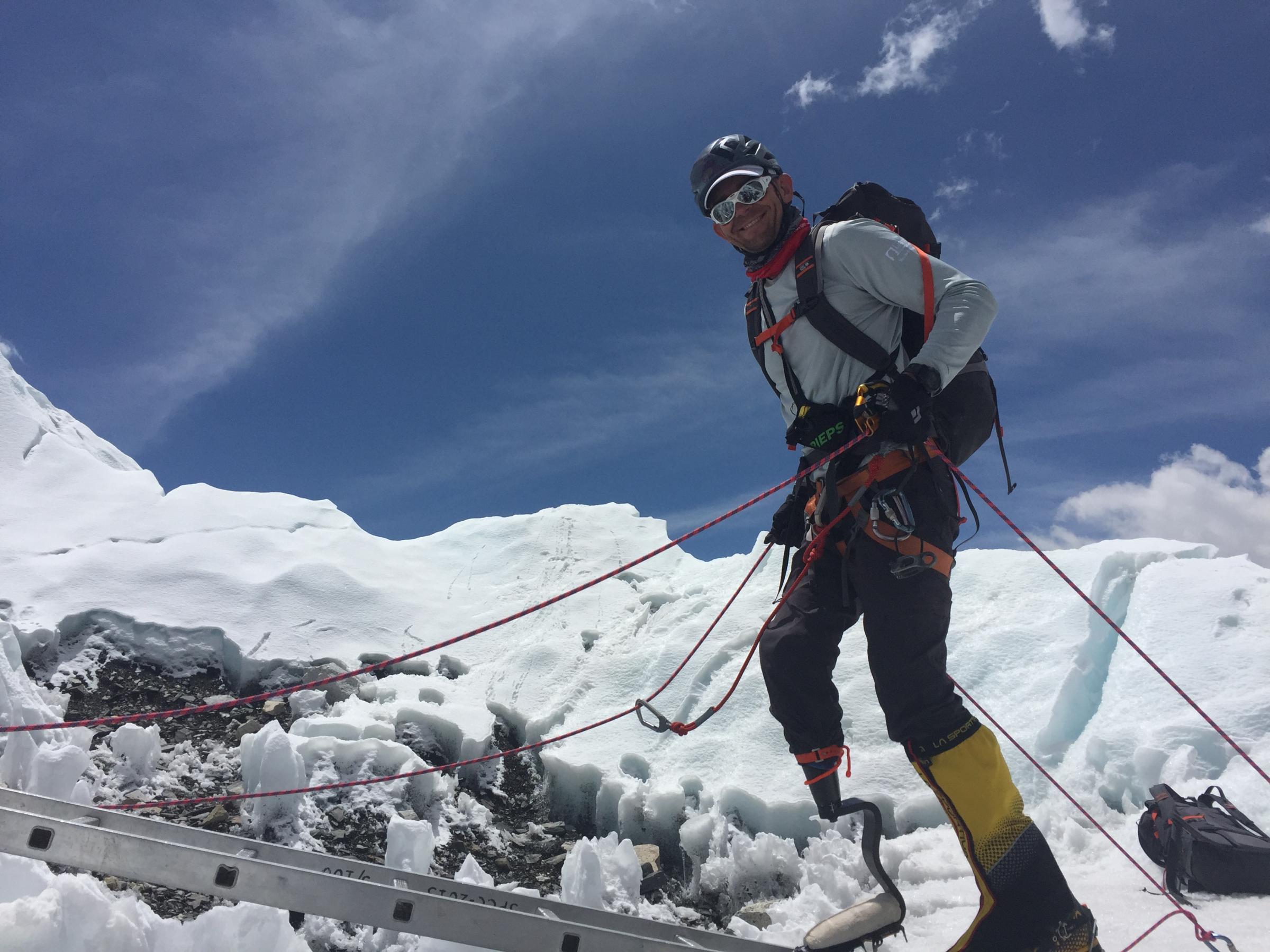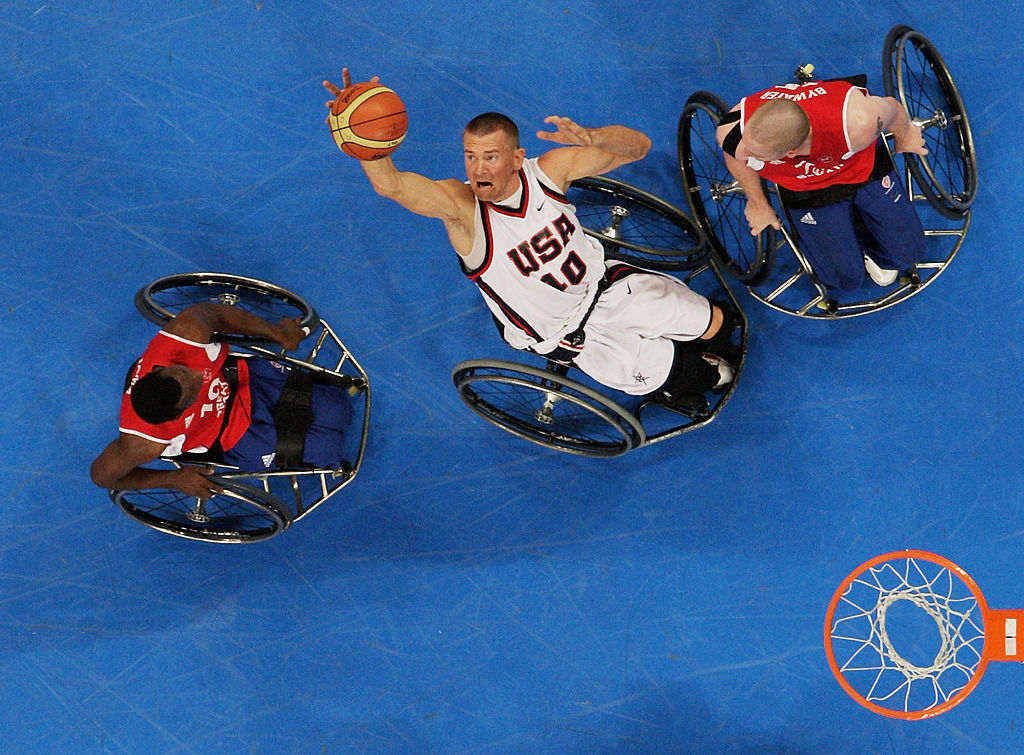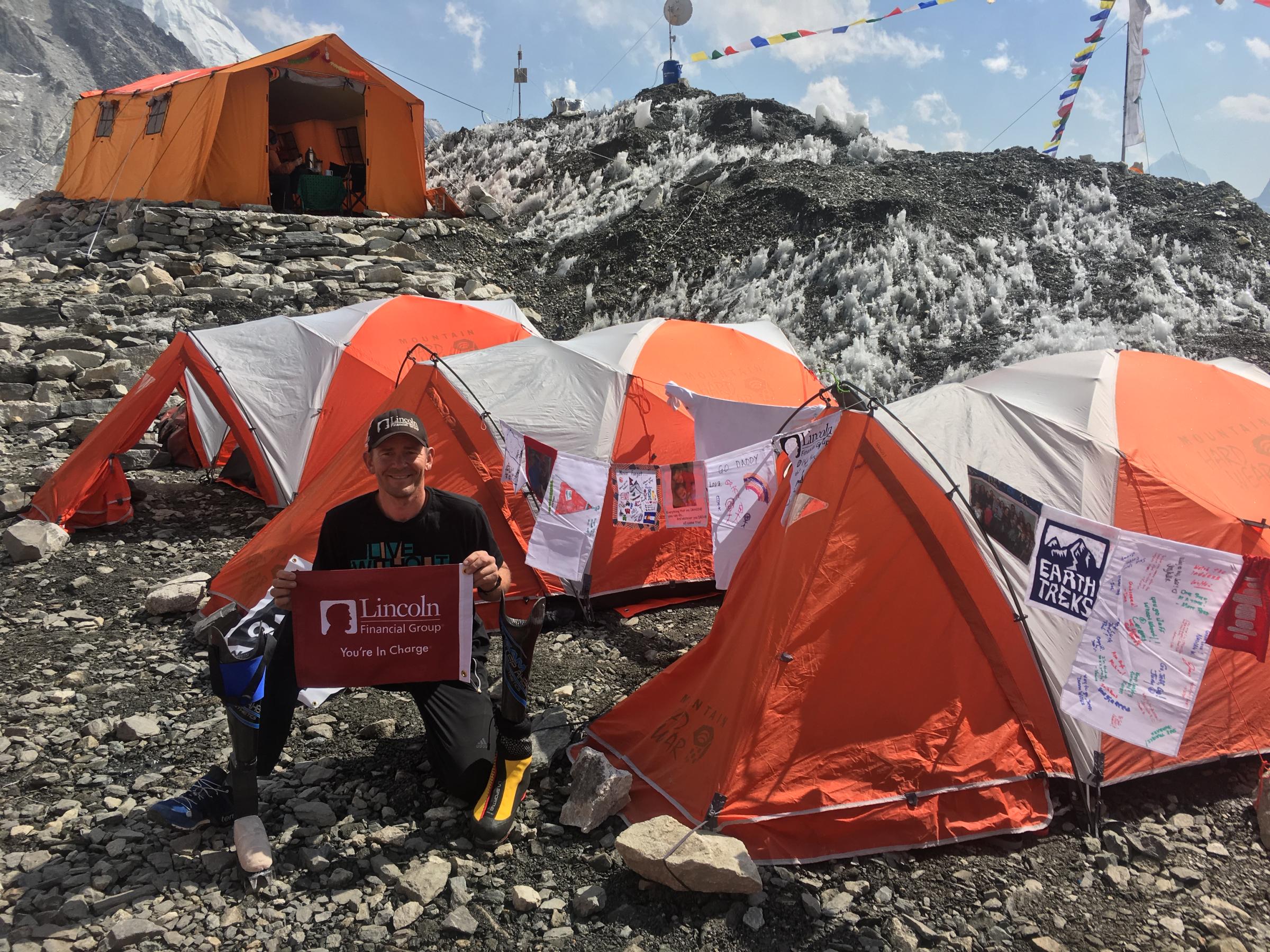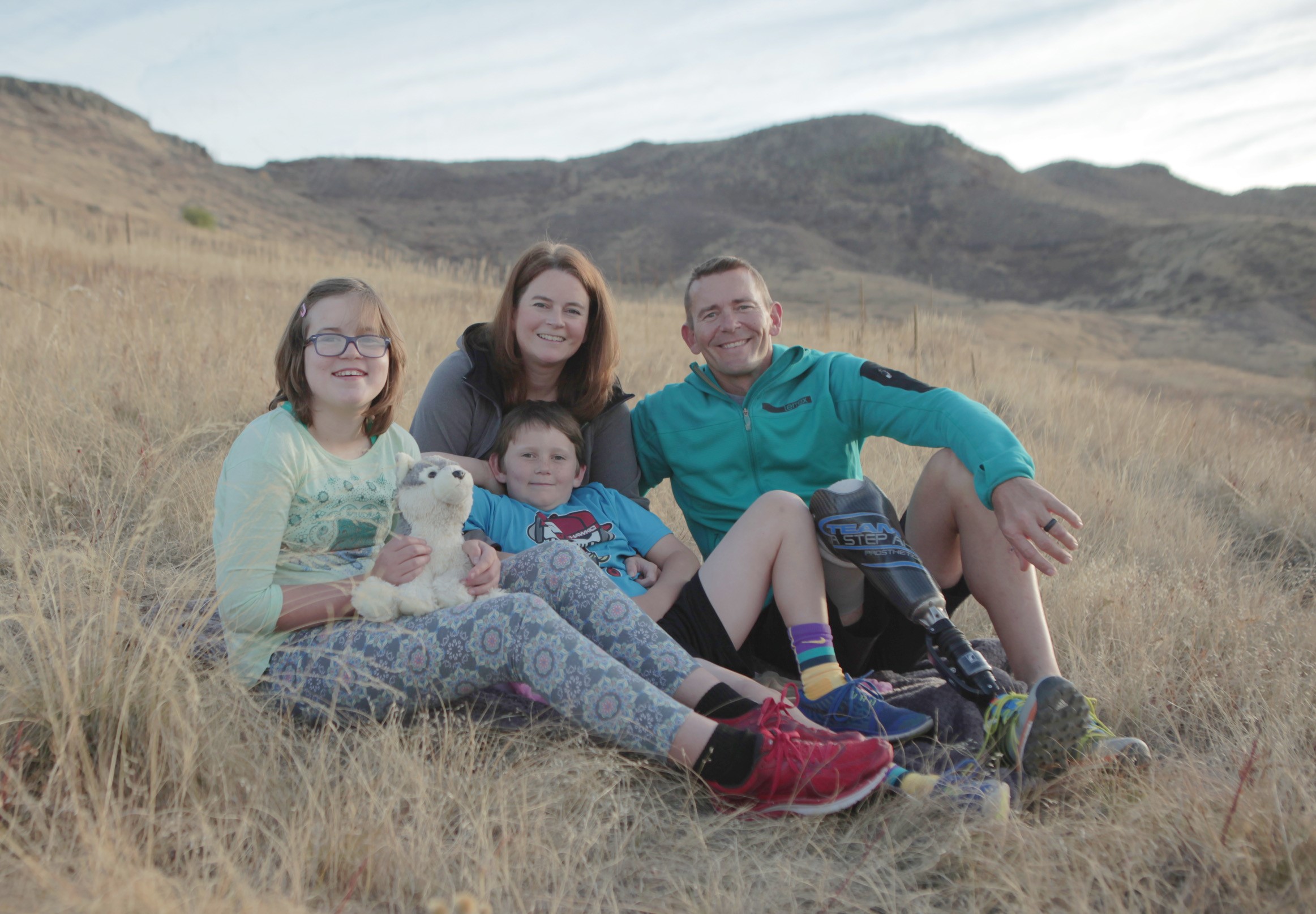Gasping for air in the middle of the night, during one of the worst moments on his trek to the perilous peak of Mount Everest, Jeff Glasbrenner thought of his dad.
The Wisconsin native was summoning his strength after being jolted awake by a sudden inability to breathe more than 17,000 feet in the air. In that instant, he questioned why he had left his family behind in Colorado to take the life-threatening journey. Then he recalled his late father’s words of wisdom.
“When I was 12, my dad told me I can choose to be pitiful or I can chose to be powerful, but I can’t be both,” Glasbrenner, now 44, told TIME in a recent interview. “That’s what came to my head.”
Glasbrenner chose power over pity and became the first American amputee to scale the world’s tallest mountain, in an expedition featured in the new virtual reality documentary Capturing Everest.
The feat last spring was nearly a lifetime in the making, said Glasbrenner, who lost his right leg in a farming accident in 1980 when he was 8. Glasbrenner was cutting hay on a tractor with his father when the vehicle struck a rock — a common occurrence during a typical day of doing chores with his dad.
“I was always the shadow of my dad. Whatever he did, I tagged along and helped him out,” he said.

Glasbrenner removed the rock and was about to hop back on the tractor when his father turned the machine back on too soon. Glasbrenner’s leg was sucked in. “It kind of took my leg off like a pencil sharpener. It was really fast. I remember looking down and seeing bone sticking out of my leg. Ten feet away, I could see my shoe with my foot still in it,” he recalled.
The boy who loved swimming and running was rushed to the hospital, where his heart stopped twice, where he had more than a dozen operations in 47 days, and where doctors told him he’d never swim and run again.
“They handed me a sheet of paper that had a whole lot of limitations placed on it. At the top of that was sports,” he said. “They confirmed my worst fears. It was a hard pill to swallow. Sadly, I believed all those limits.”
Glasbrenner’s father never spoke candidly about the accident with his son — even in the final days before the elder Jeff Glasbrenner died of lung cancer in 2010.
“He grew up in an era where you didn’t talk about your feelings. Every time I’d bring it up, he would always change the subject,” the mountaineer said. “The only time we ever spoke about it, he told me he was proud of me, and that’s all I ever really needed.”
“I’ve told him it was just an accident. It can happen to any of us at any time. I didn’t hold it against him,” he added. “That was my closure with that.”
A decade after the accident, Glasbrenner started playing sports again and quickly became a star. He discovered wheelchair basketball while attending the University of Wisconsin-Whitewater and went on to become a three-time Paralympian and a two-time World Champion in the sport.

The accident — and the physical, emotional and spiritual challenges that followed — was the catalyst that ultimately inspired Glasbrenner to tackle Everest, he said. It caused him to become more competitive and pushed him to prove people wrong.
“Most of the time in my life, I feel like I’m on top of the world, and I truly wanted to be there,” said Glasbrenner, who is married with two young children. “Those doctors telling me I couldn’t do things. Why can’t I? I should never put limits on myself. I viewed that as the ultimate challenge in endurance and dealing with adversity and believing in yourself.”
During the two-month trek last year, Glasbrenner lost 20 lbs., spent more than five hours trapped in a storm with 70 mph winds and suffered the breathing scare, which was caused by a condition called Cheyne-Stokes respiration. He did it all while using a prosthetic leg that was increasingly ill-fitting, stuffed with extra socks to make up for his lost weight. But Glasbrenner endured, and he reached the peak on his first attempt up the mountain.

“I just really couldn’t believe it. I trained for it. I imagined it. I visualized myself on the summit, but to be standing there was surreal,” he said. “Dreams come with risks.”
Now Glasbrenner’s journey can be experienced through Capturing Everest, the first virtual reality documentary of an expedition up Mount Everest, created by Sports Illustrated and Endemol Shine Beyond USA.
Glasbrenner said he agreed to be a part of the project to give his 11-year-old daughter, who has a seizure disorder, the ability to take the trip with him. “She’ll never have a chance to climb Mount Everest, but I know — being part of this project — she can come along on this journey with me. She can see Daddy climb. She can see every step I took along the way,” he said.

Next up, the motivational speaker is attempting to reach the North Pole and the South Pole and climb the Seven Summits. He’s also competing on reality competition show American Ninja Warrior in Denver this month.
“I want people to understand that the only limits are the ones you place on yourself,” he said. “Don’t listen to others when they say you can’t do it. You have to believe in yourself.”
Glasbrenner still gets “goose bumps every time” he thinks about the view from the mountain’s peak. He’s now thankful for the accident, which turned his life around almost 40 years ago but later helped him reach the top of the world.
“I’m a farm boy from Wisconsin. Without this accident, I don’t know if I would have done that,” he said. “Everything happens for a reason.”
More Must-Reads from TIME
- Cybersecurity Experts Are Sounding the Alarm on DOGE
- Meet the 2025 Women of the Year
- The Harsh Truth About Disability Inclusion
- Why Do More Young Adults Have Cancer?
- Colman Domingo Leads With Radical Love
- How to Get Better at Doing Things Alone
- Michelle Zauner Stares Down the Darkness
Contact us at letters@time.com